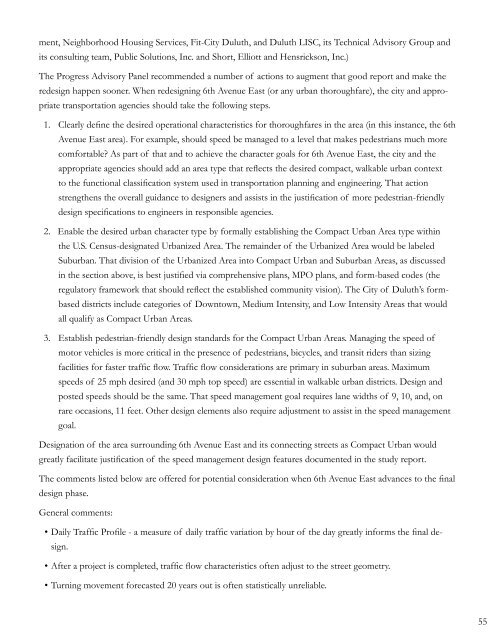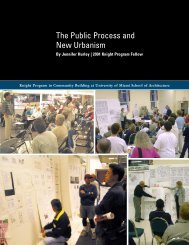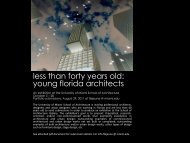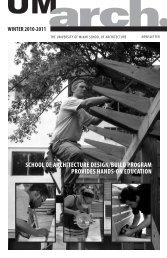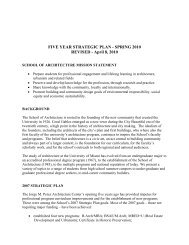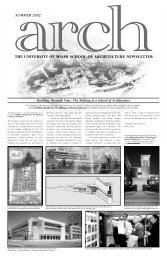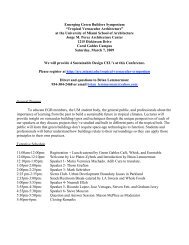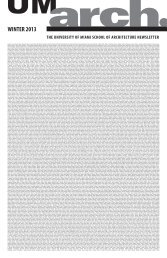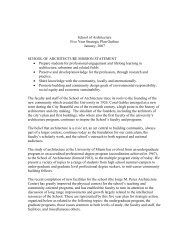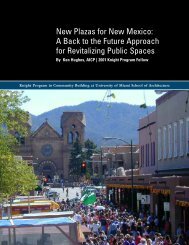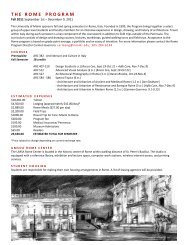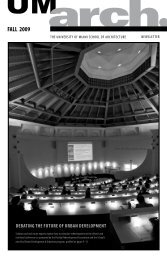Final Progress Advisory Panel Report - Knight Program in ...
Final Progress Advisory Panel Report - Knight Program in ...
Final Progress Advisory Panel Report - Knight Program in ...
Create successful ePaper yourself
Turn your PDF publications into a flip-book with our unique Google optimized e-Paper software.
ment, Neighborhood Hous<strong>in</strong>g Services, Fit-City Duluth, and Duluth LISC, its Technical <strong>Advisory</strong> Group and<br />
its consult<strong>in</strong>g team, Public Solutions, Inc. and Short, Elliott and Hensrickson, Inc.)<br />
The <strong>Progress</strong> <strong>Advisory</strong> <strong>Panel</strong> recommended a number of actions to augment that good report and make the<br />
redesign happen sooner. When redesign<strong>in</strong>g 6th Avenue East (or any urban thoroughfare), the city and appropriate<br />
transportation agencies should take the follow<strong>in</strong>g steps.<br />
1. Clearly def<strong>in</strong>e the desired operational characteristics for thoroughfares <strong>in</strong> the area (<strong>in</strong> this <strong>in</strong>stance, the 6th<br />
Avenue East area). For example, should speed be managed to a level that makes pedestrians much more<br />
comfortable As part of that and to achieve the character goals for 6th Avenue East, the city and the<br />
appropriate agencies should add an area type that reflects the desired compact, walkable urban context<br />
to the functional classification system used <strong>in</strong> transportation plann<strong>in</strong>g and eng<strong>in</strong>eer<strong>in</strong>g. That action<br />
strengthens the overall guidance to designers and assists <strong>in</strong> the justification of more pedestrian-friendly<br />
design specifications to eng<strong>in</strong>eers <strong>in</strong> responsible agencies.<br />
2. Enable the desired urban character type by formally establish<strong>in</strong>g the Compact Urban Area type with<strong>in</strong><br />
the U.S. Census-designated Urbanized Area. The rema<strong>in</strong>der of the Urbanized Area would be labeled<br />
Suburban. That division of the Urbanized Area <strong>in</strong>to Compact Urban and Suburban Areas, as discussed<br />
<strong>in</strong> the section above, is best justified via comprehensive plans, MPO plans, and form-based codes (the<br />
regulatory framework that should reflect the established community vision). The City of Duluth’s formbased<br />
districts <strong>in</strong>clude categories of Downtown, Medium Intensity, and Low Intensity Areas that would<br />
all qualify as Compact Urban Areas.<br />
3. Establish pedestrian-friendly design standards for the Compact Urban Areas. Manag<strong>in</strong>g the speed of<br />
motor vehicles is more critical <strong>in</strong> the presence of pedestrians, bicycles, and transit riders than siz<strong>in</strong>g<br />
facilities for faster traffic flow. Traffic flow considerations are primary <strong>in</strong> suburban areas. Maximum<br />
speeds of 25 mph desired (and 30 mph top speed) are essential <strong>in</strong> walkable urban districts. Design and<br />
posted speeds should be the same. That speed management goal requires lane widths of 9, 10, and, on<br />
rare occasions, 11 feet. Other design elements also require adjustment to assist <strong>in</strong> the speed management<br />
goal.<br />
Designation of the area surround<strong>in</strong>g 6th Avenue East and its connect<strong>in</strong>g streets as Compact Urban would<br />
greatly facilitate justification of the speed management design features documented <strong>in</strong> the study report.<br />
The comments listed below are offered for potential consideration when 6th Avenue East advances to the f<strong>in</strong>al<br />
design phase.<br />
General comments:<br />
• Daily Traffic Profile - a measure of daily traffic variation by hour of the day greatly <strong>in</strong>forms the f<strong>in</strong>al design.<br />
• After a project is completed, traffic flow characteristics often adjust to the street geometry.<br />
• Turn<strong>in</strong>g movement forecasted 20 years out is often statistically unreliable.<br />
55


